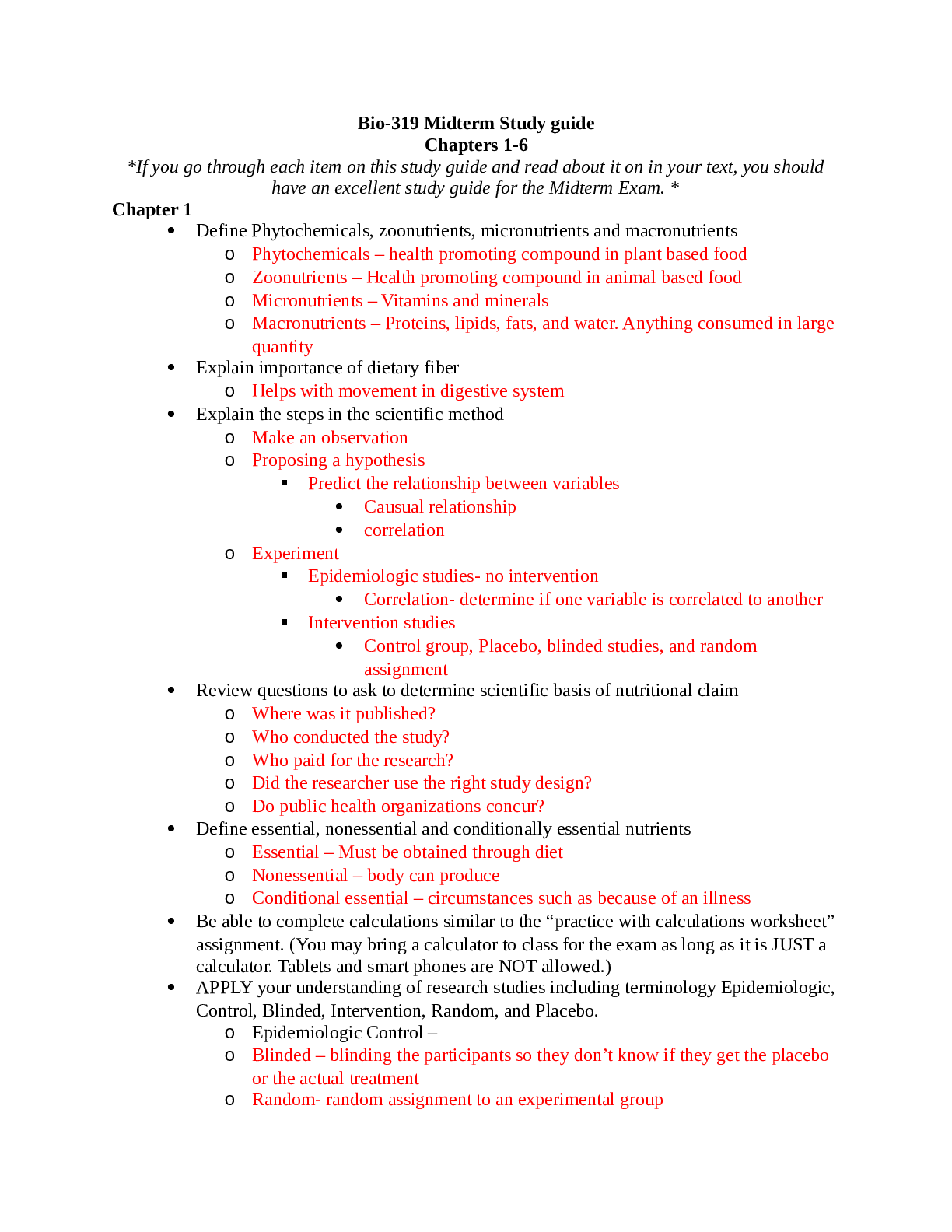*NURSING > QUESTIONS & ANSWERS > NRNP 6560 Midterm Exam Review Latest 2022 Already graded A+ (All)
NRNP 6560 Midterm Exam Review Latest 2022 Already graded A+
Document Content and Description Below
NRNP 6560 Midterm Exam Review Latest 2022 Already graded A+ Surgery risk classes -----Class 1: benefits outweigh risk, should be done Class 2a: reasonable to perform Class 2b: should be considered... Class 3: rarely appropriate General rules for surgery: testing -----ECG before surgery only if coronary disease, except when low risk surgery Stress test not indicated before surgery Do not do prophylactic coronary revascularization Meds before surgery ------ Diabetic agents: Use insulin therapy to maintain glycemic goals(iii) Discontinue biguanides, alpha glucosidase inhibitors, thiazolidinediones, sulfonylureas, and GLP-1 agonists - Do not start aspirin before surgery - Stop Warfarin 5 days before surgery. May be bridged with Lovenox. - Do not stop statin before surgery - Do not start beta-blocker on day of surgery, but may continue Assessment of surgical risk ------ Unstable cardiac condition (recent MI, active angina, active HF, uncontrolled HTN, severe valvular disease), concern with CAD, CHF. arrhythmia, CVD - patient stable or unstable? - urgency of the procedure (oncology will be time sensitive) - risk of procedure - nutritional status - immune competence - determine functional capacity (need to be more than 4 METS, more than 10 METs makes low risk)Low risk surgeries -----catarcts breast biopsy cystoscopy, vasectomy laporascopic procedures Plastic surgery intermediate risk surgeries -----Head/ neck surgery thyroidectomy Intraperitoneal Prostate Laminectomy Hip/ knee Hysterectomy cholecystectomy nephrectomy non majot intrathoracic High risk surgeries -----aortic/ cabg transplants spinal reconstruction peripheral vascular surgery Lee's revised cardiac risk index -----6 points: High risk surgery = 1 CAD = 1 CHF = 1 Cerebrovascular disease = 1 DM 1 on insulin = 1 Creat greater than 2 = 11 = low risk 2 = moderate risk 3 = high risk SCIP pre-operative infection measures ------ Prophylactic antibiotics should be received within 1 h prior to surgical incision - be selected for activity against the most probable antimicrobial contaminants - be discontinued within 24 h after the surgery end-time Postoperative infection reduction methods ------ pre-op hair removal (clippers) - wash hands - normothermia - maintain euglycemia - urinary catheters are to be removed within the first two postoperative days Osteoarthritis: what, incidence -----Slow destruction of bones/ joint followed by production of replacement collagen which causes inflammatory changes - older than 60 - more female after 55 - more black than white women - men and women equal risk between 45 - 55 - abnormal height or weight (obesity) - repetitive movement - prior trauma (sprains/ dislocations) - diabetic neuropathy - geneticOsteoarthritis findings and diagnostics ------ Pain in weight bearing joints - stiffness after sitting, gets better when arising - feeling of instability on stairs - fine motor skills deficit - larger affected joints - Heberden nodules (bony bumps on the finger joint closest to the fingernail) - Bouchard's nodules (bony bumps on the middle joint of the finger) - limited ROM with crepitus - xr shows narrowing of joint space (need anteroposterior and lateral knee films bilaterally) - synovial fluid is clear and without WBC Osteoarthritis treatment -----Goal is to relieve symptoms, maintain/ improve function, and avoid drug toxicity Hand OA: - rest/ joint protection, with splinting - heat/ cold therapy - topical capsaicin - topical NSAID (trolamine salicylate) (especially for older than 75) - Oral NSAIDS, incl COX2 inhibitors such as celecoxib (Celebrex) (may cause cardiac problems) - tramadol - no opioids Hip/ knee OA: - weight reduction, cardiovascular exercises - transcutanous external nerve stimulator - acetaminophen - Topical NSAIDS (knee)- intraarticular corticosteroid injections - surgery (joint replacement) Rheumatoid arthritis: what, who -----chronic, systemic autoimmune disease that causes inflammation of connective tissue, first that of jionts them other soft tissues (renal, cardiovascular, pulm). TNF-alpha plays a big role - more women than men - unknown cause - Epstein Barr virus Rheumatoid arthritis: Findings and diagnostics ------ symmetric joint/ muscle pain, worse in the morning then gets better - weakness, fatigue - anorexia, weight loss - generalized malaise - swollen joints/ boggy feeling of joints with deformity of joints - warm, red skin on affected joints later: - pleural effusions and pulmonary nodules - inflammation of sclerea (scleritis) - pericarditis, myocarditis - splenomegaly (Felty's syndrome) - anemia (hypochromic, microcytic) with low ferritin - possibly: positive rheumatoid factor - XR: joint swelling, later cortical and space thinning - synovial fluid: yellow, thick with elevated WBC up to 100.000 Felty's syndrome -----rheumatoid arthritis, splenomegaly, neutropeniaRheumatoid arthritis treatment ------ early treatment better than stepwise - early referral rheumatologist - disease-modifying anti-rheumatic drugs (DMARDs): - methotrexate ( no alcohol, monitor renal and liver, give with folic acid) - cyclosporine - Gold preparations (can cause thrombocytopenia) - Hydroxychloroquine: antimalarial drug (may cause visual changes, monitor) - sulfasalazine, moderate RA - Leflunomide, moderate to severe RA - Etanercept - monitor liver function with DMARDs - screen for TB (skin test) and Hep B - surgery: joint debridement, joint replacement Gout: what, who -----Inflammatory disorder in response to high uric acid production/ levels in blood and synovial fluid causing crystallization which causes inflammation (Type A and Mediterranean) - impaired renal function which causes excess uric acid - foods high in purine, such as dairy, red meat, shellfish, beer Gout findings, diagnostics ------ acute painful joint, often great toe (warm, swollen) - pain at night - flank pain because of renal calculi - fever - leukocytosis - elevated erythrocyte sedimentation rate - tophi (bump under skin) on ear - limited joint motion- elevated serum uric acid (greater than 7mg/dl) - urate crystals seen with joint aspiration - xr: joint erosion and renal stones Gout treatment ------ NSAIDS: naproxen, ondomethacin, sulindac - Colchicine for those who do not tolerate NSAIDS (caution with renal impairment). Also for prophylaxis - Corticosteroids, if NSAIDS and colchicine not tolerated - 24hr urine for uric acid - Allopurinol after flare is over (100mg PO daily) - Biological modifiers of disease (BMD): Pegloticase. Not for asymptomatic. Treat with prophylaxis first. Monitor serum uric acid ANA. Tests in rheumatic disease: what, normal level, abnormal with. -----Antinuclear antibody (ANA). Normal: Titer 1.32 POsitive with: Sjogren's (SS), SLE (lupus), C4 Complement. Tests in rheumatic disease: what, normal level, abnormal with. -----Determines hemolytic activity which speaks to level of inflammatory response Normal: men: 12-72. Women: 13-75 mg/dl Increased with: inflammatory disease Decreased with: RA, lupus, SS The radioallergosorbent test (RAST). Tests in rheumatic disease: what, normal level, abnormal with. ----- measures presence/ increase antigen IgE normal: 0.01 - 0.04 mg/dl Increased with allergic reaction Erythrocyte sedimentation rate (ESR). Tests in rheumatic disease: what, normal level, abnormal with. ---- -rate at which RBC settle out of unclotted blood in 1 hr [Show More]
Last updated: 2 years ago
Preview 1 out of 67 pages

Buy this document to get the full access instantly
Instant Download Access after purchase
Buy NowInstant download
We Accept:

Reviews( 0 )
$10.00
Can't find what you want? Try our AI powered Search
Document information
Connected school, study & course
About the document
Uploaded On
Sep 16, 2022
Number of pages
67
Written in
Additional information
This document has been written for:
Uploaded
Sep 16, 2022
Downloads
0
Views
95


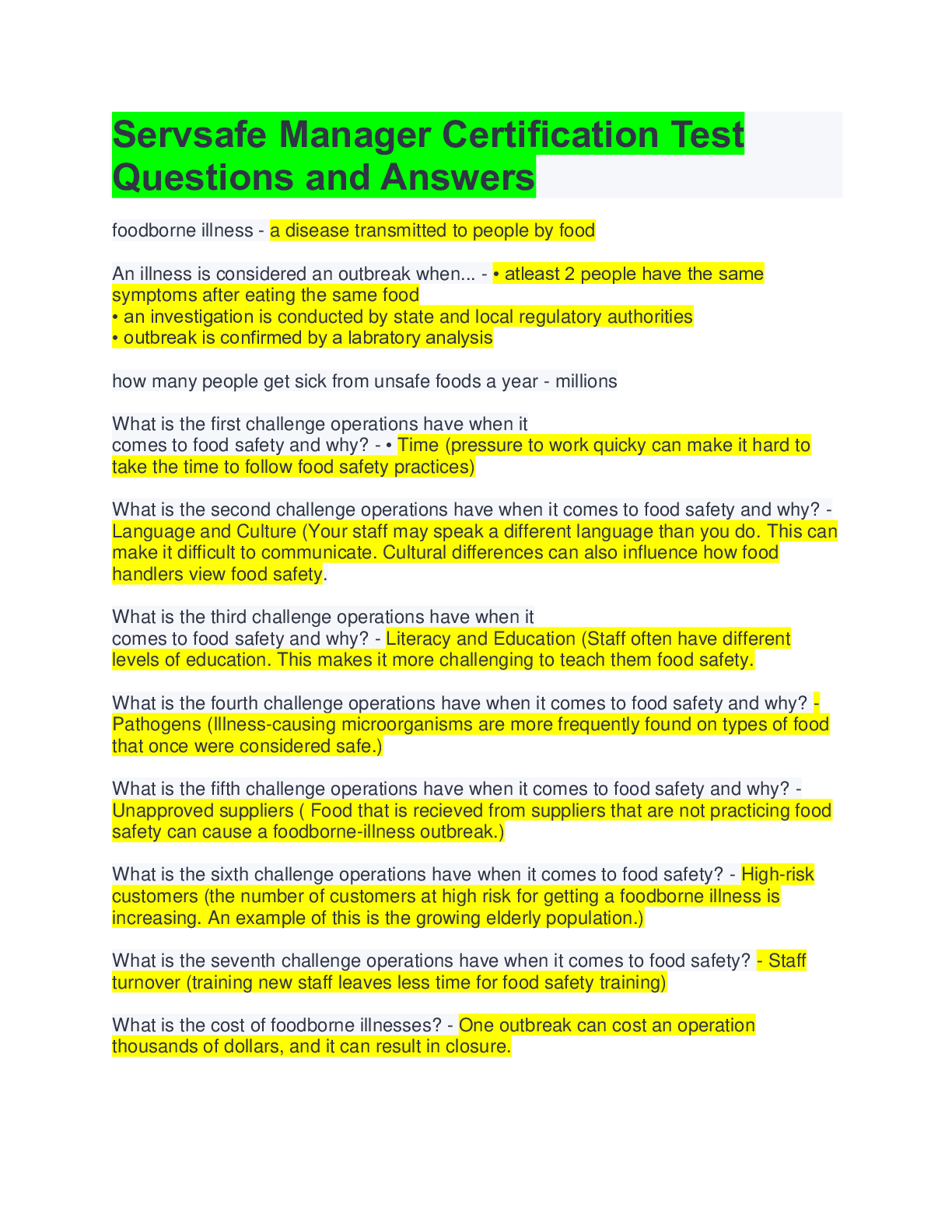
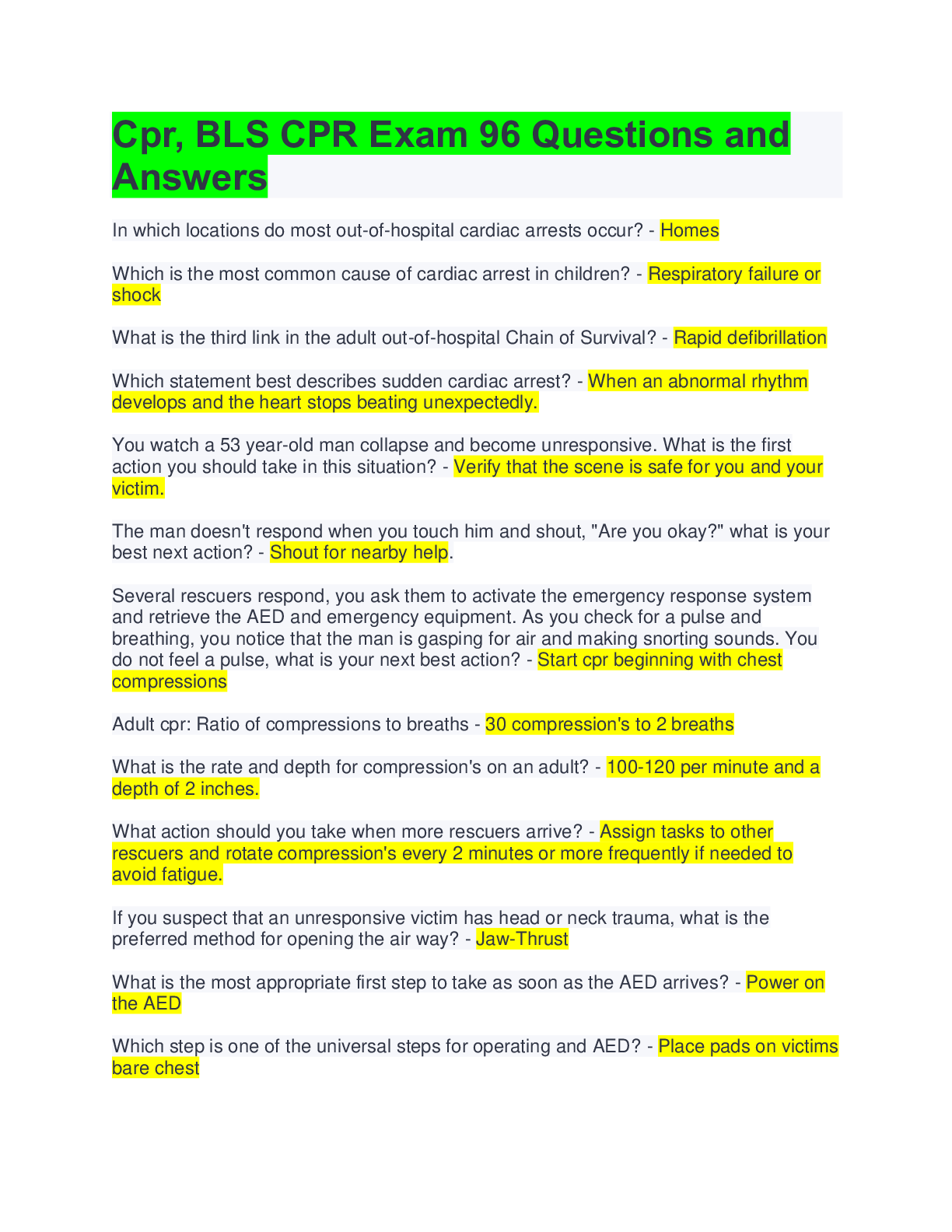


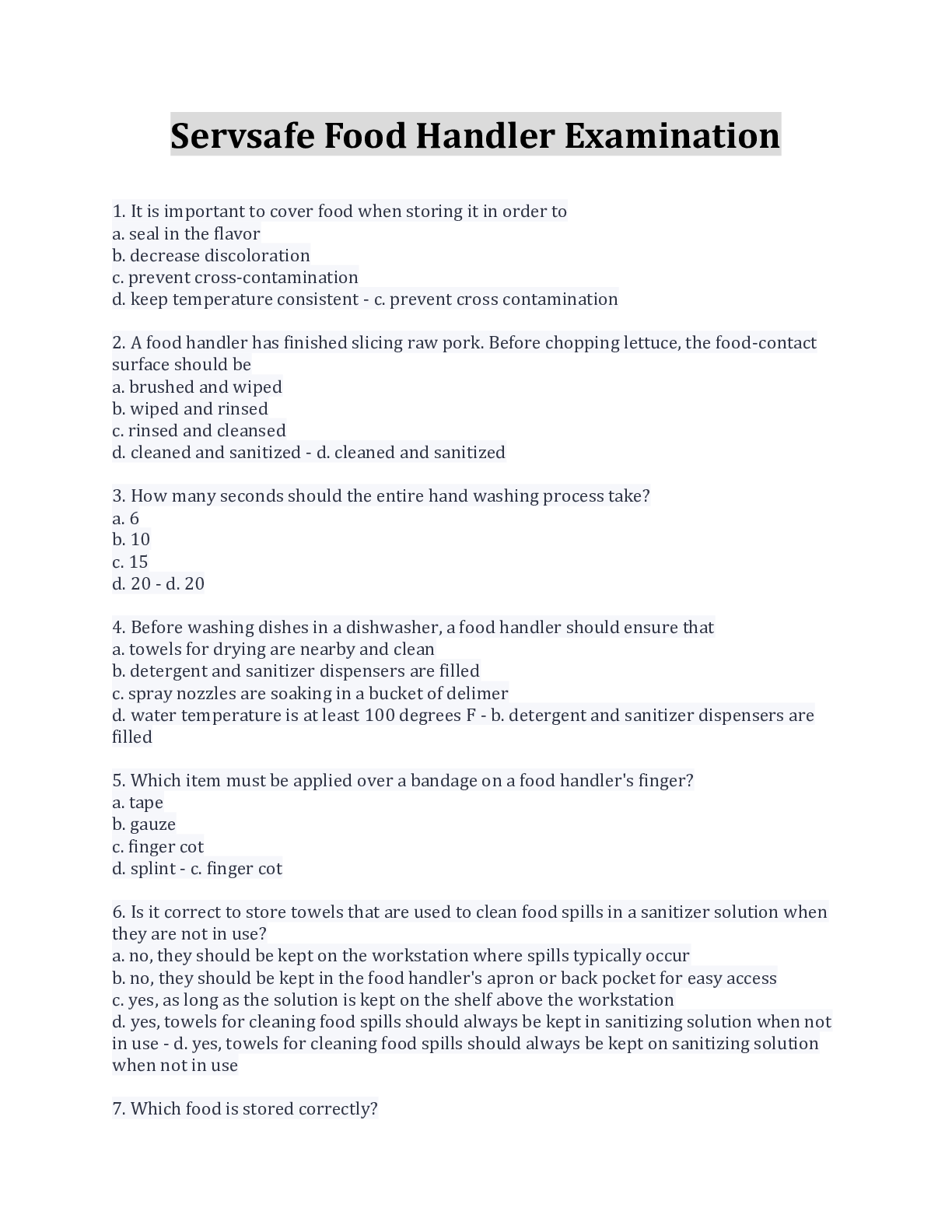
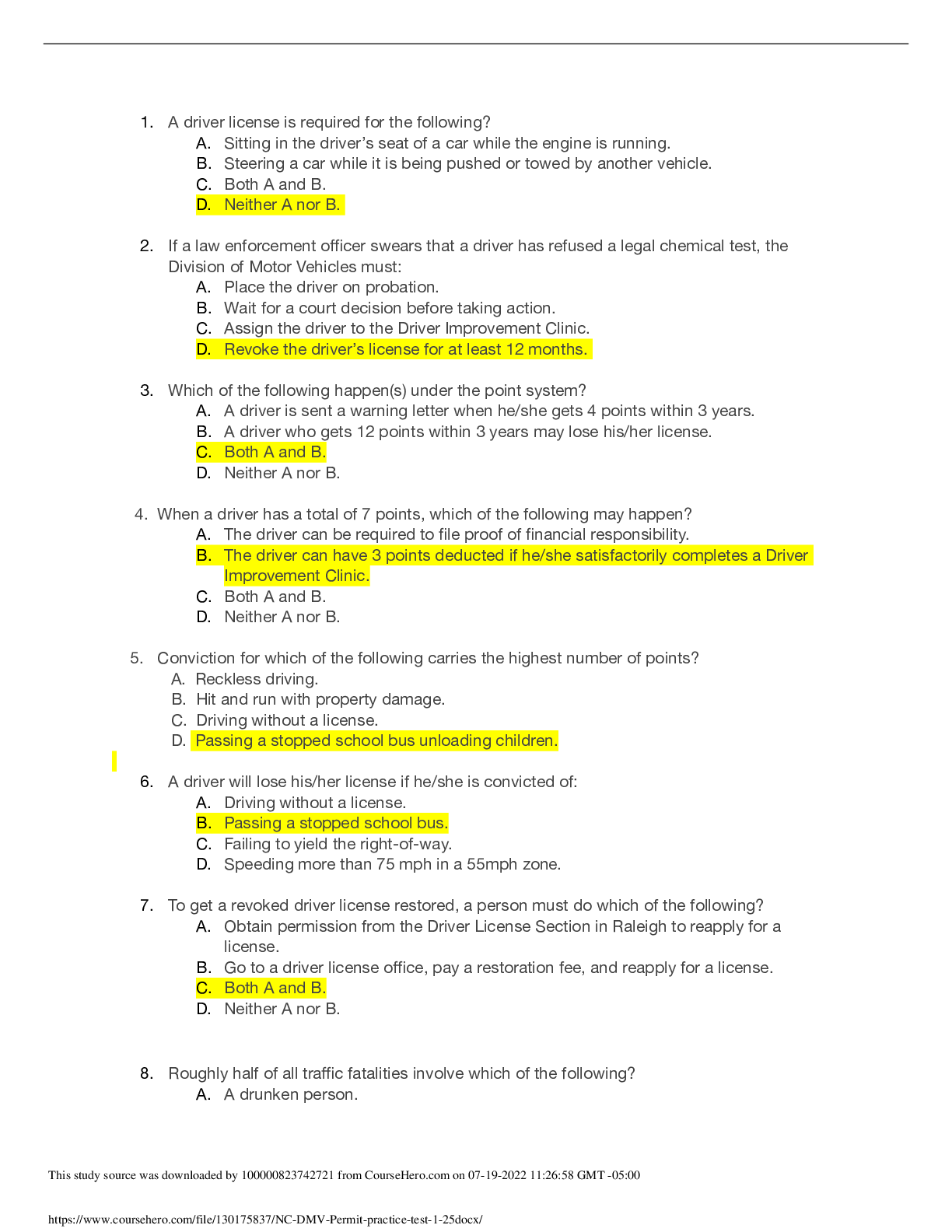
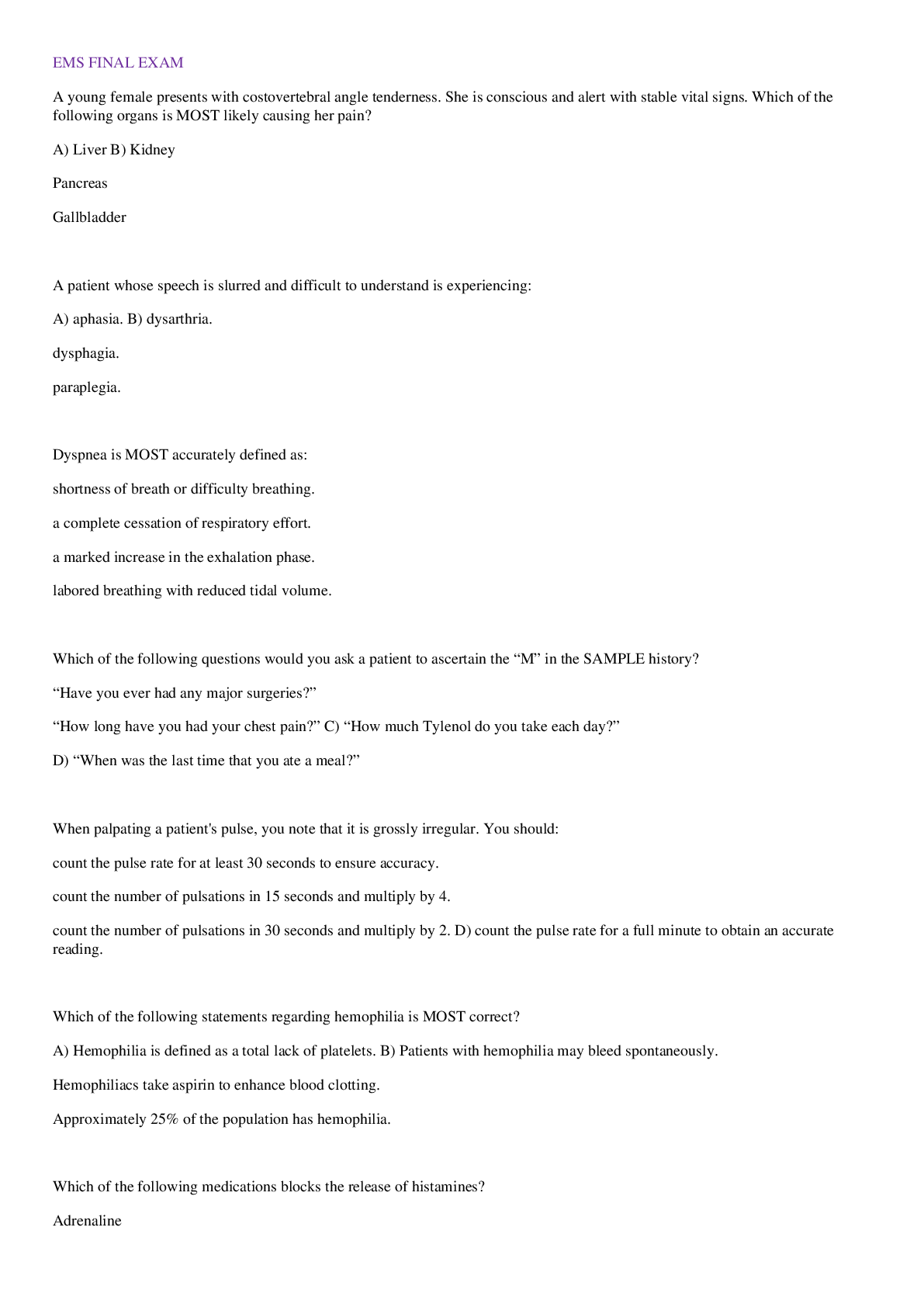
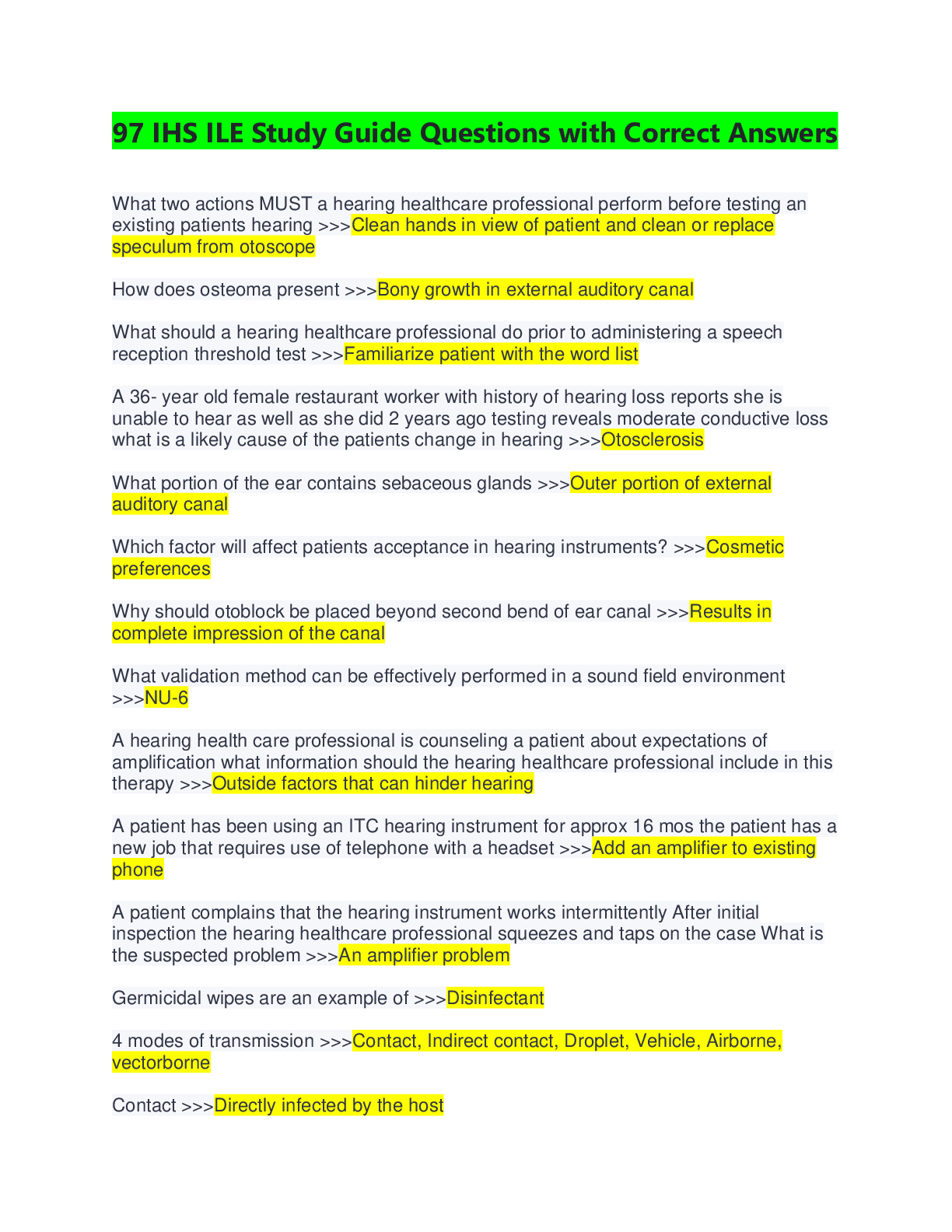
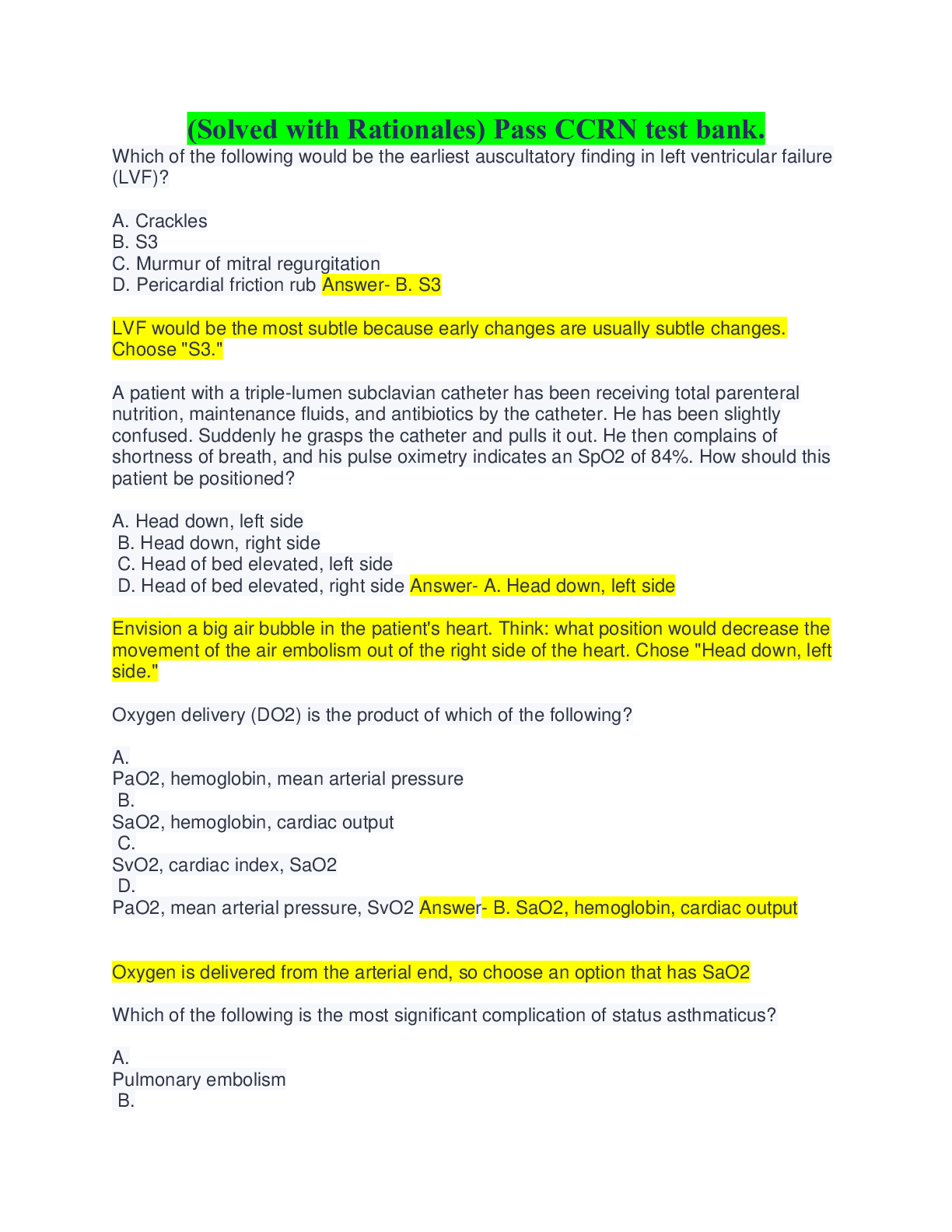
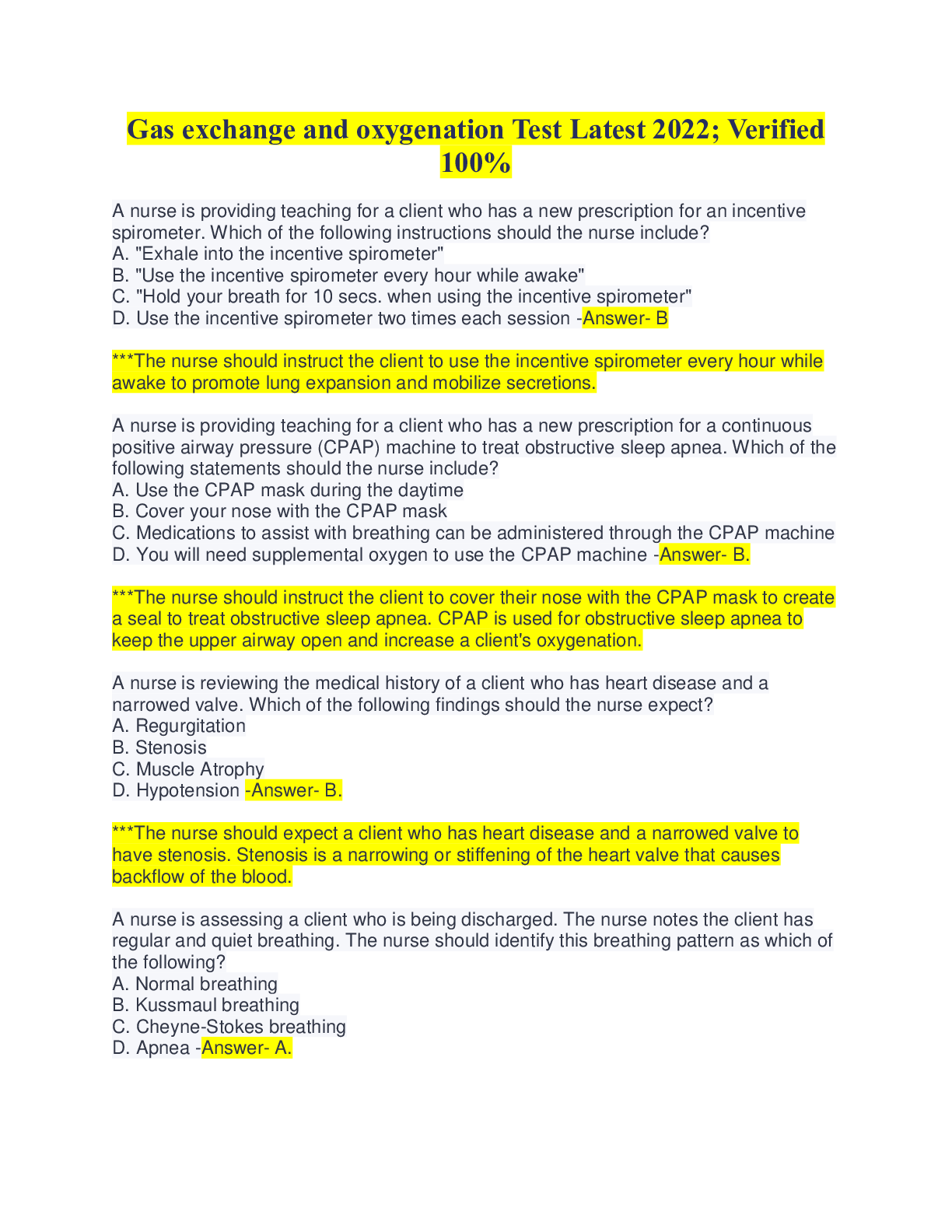
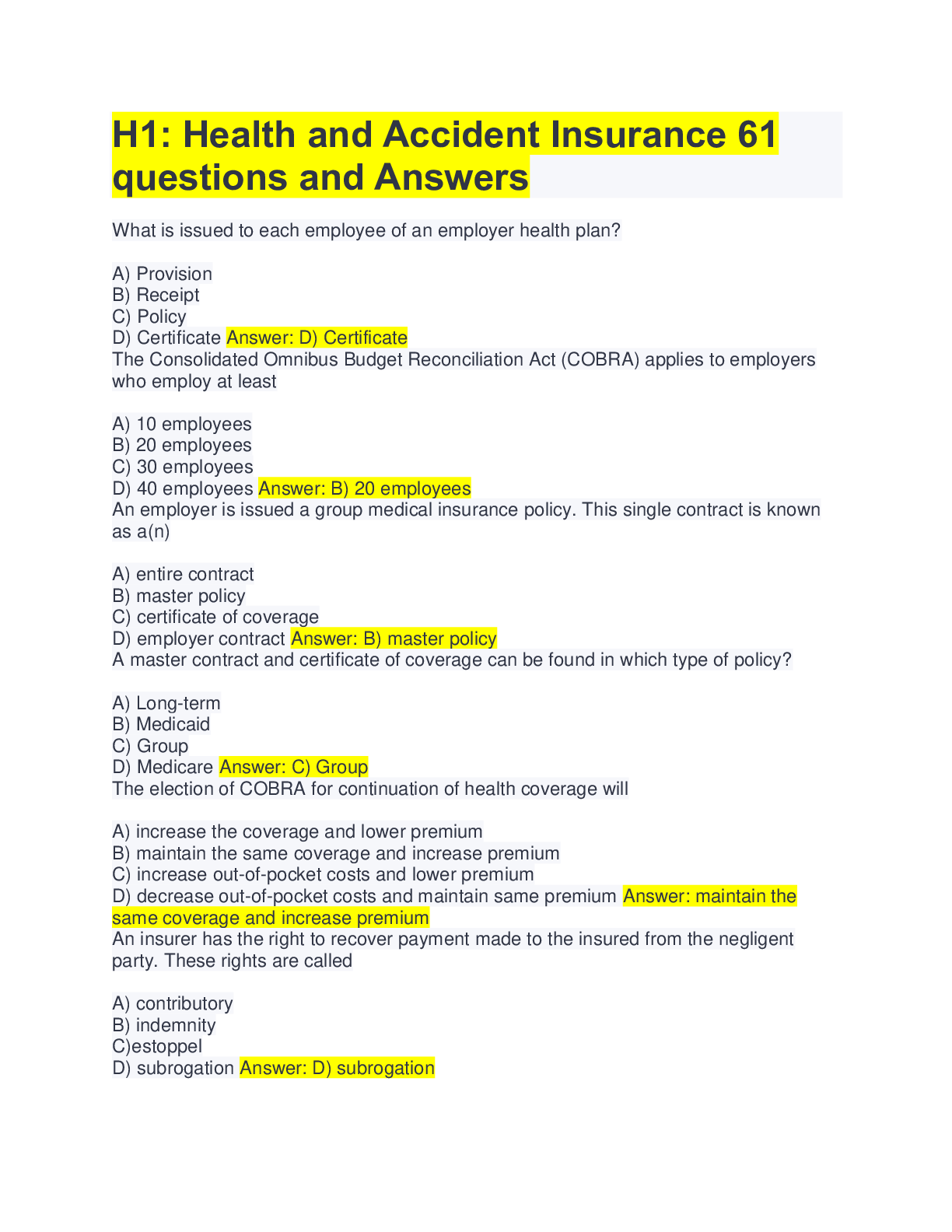


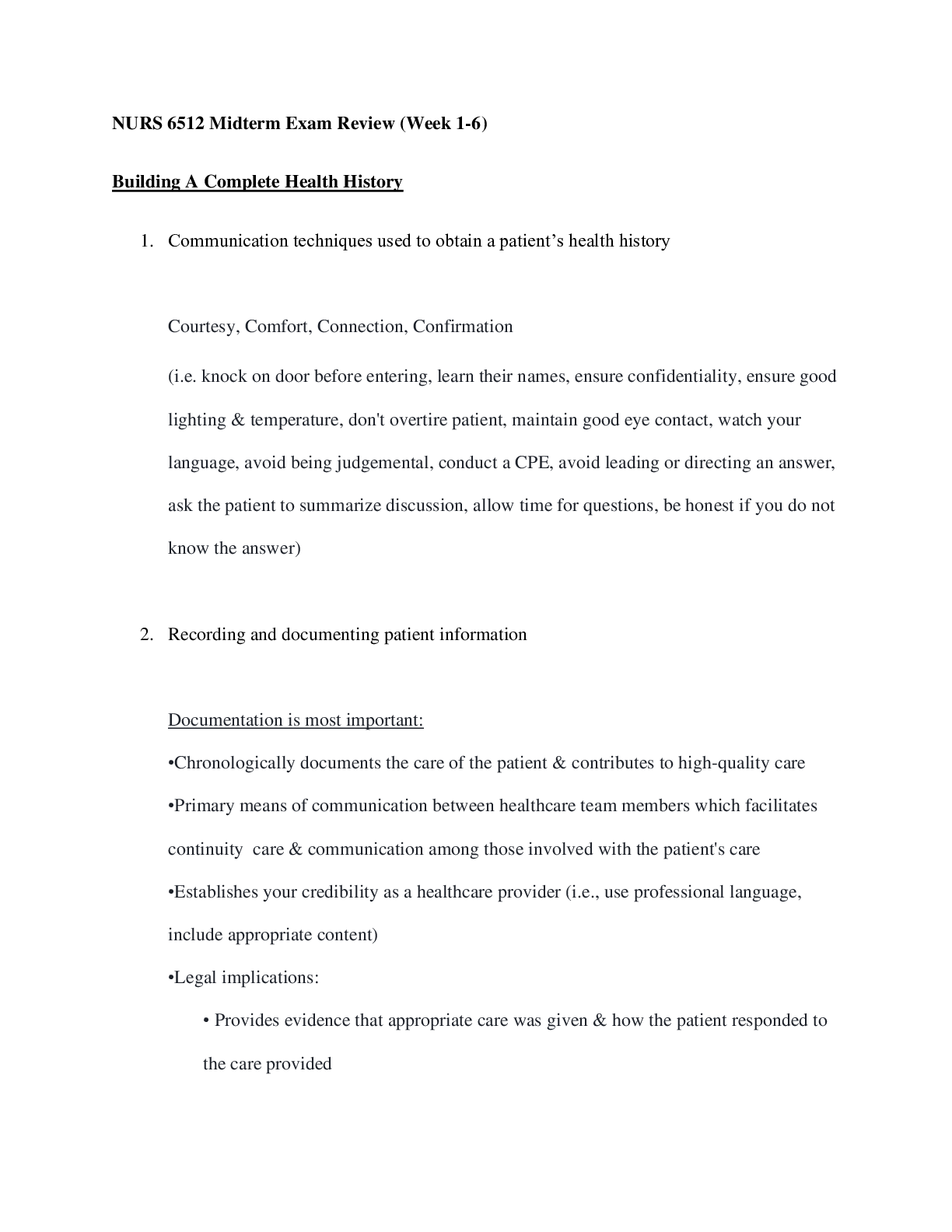
, Correct Answers, Download to Score A.png)




.png)
